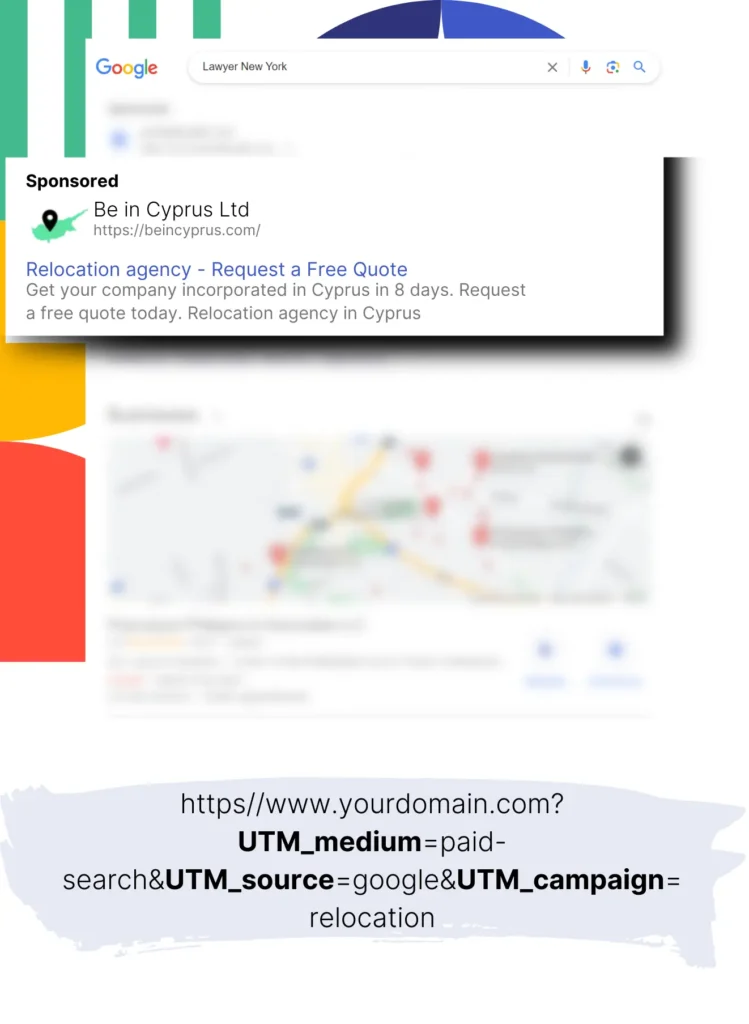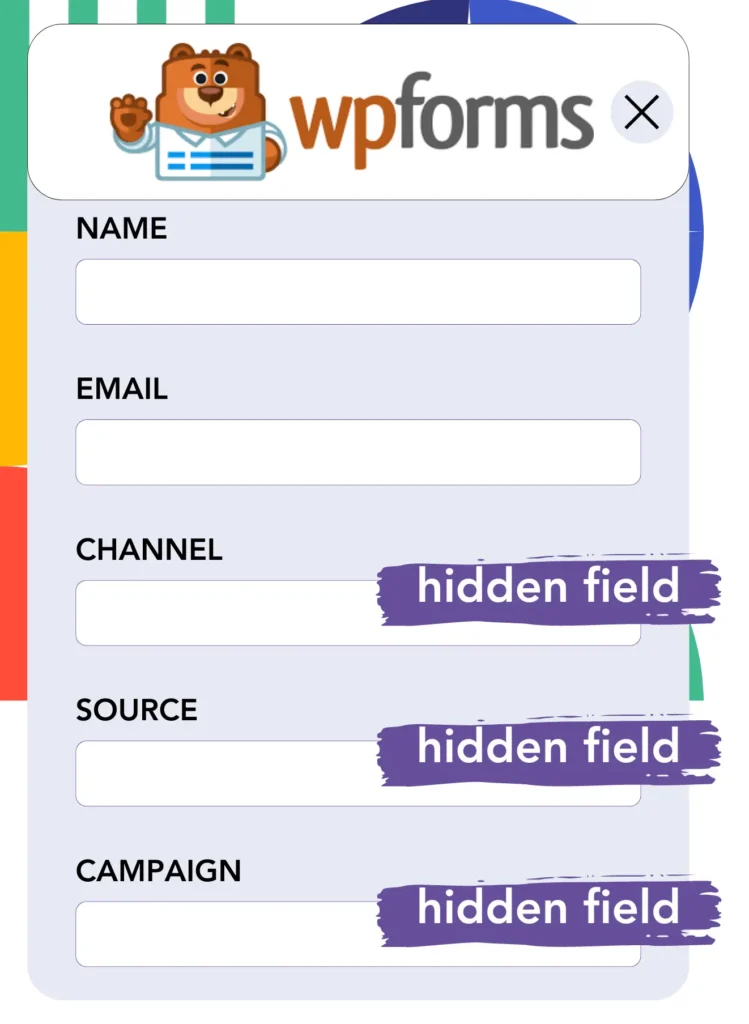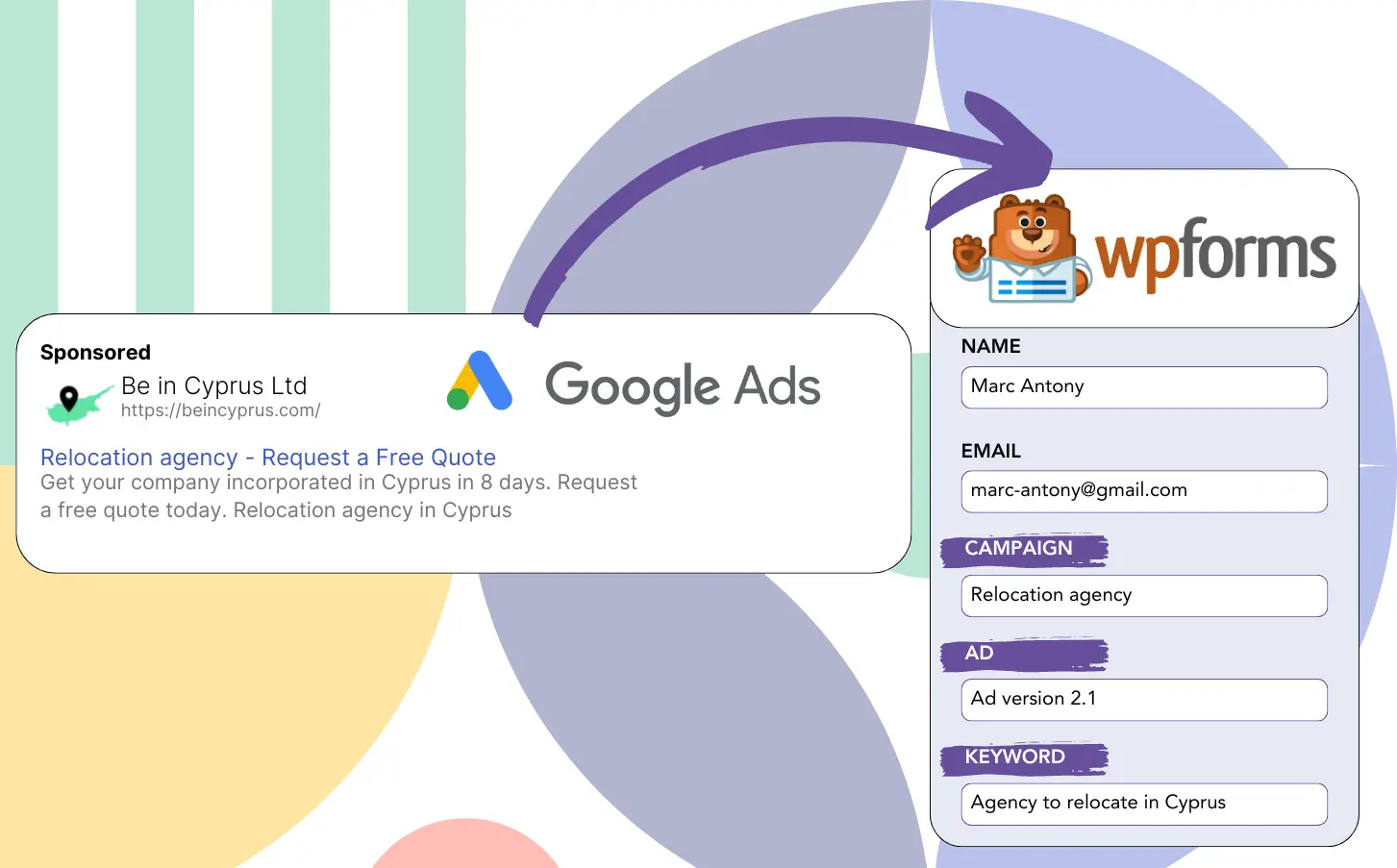Google Ads are helping you generate leads, but you’re unclear about which campaigns are effective.
This challenge is well-documented. Google Ads reports the total leads from a campaign, ad, or keyword but omits data on each lead.
As a result, it is impossible to know which campaign, ad, or keyword brought in leads that converted to customers.
LeadSources provides a solution for this problem.
LeadSources makes it possible to follow your Google Ads data (campaign, ad, keyword, etc.) at the lead level.
You are able to store Google Ads data (campaign, ad, keyword, etc.) for all leads generated in WPForms.
This enables you to produce reports such as “Keywords that generated the most leads” and decide which keywords to boost or eliminate.
Let’s go ahead!
Capture Google Ads lead data in WPForms in 4 steps
Step 1: Add Leadsources in the head tag of your website

Sign up to Leadsources.io, and benefit from our 14-day free trial.
Place the LeadSources code within your website’s head tag. No coding skills is needed.
Simply follow this easy step-by-step guide.
Step 2: Add the UTM parameters to your Google Ads campaigns

Insert the UTM parameters you intend to track into every Google Ads campaign.
You can use the following UTM parameters in your ad:
- UTM_source
- UTM_campaign
- UTM_term
- UTM_content
Along with UTM parameters, LeadSources tracks data such as the channel, landing page, and subfolder, giving you a detailed view at the lead level.
Step 3: Add the hidden fields in WPForms

As visitors provide details on your WPForms (name, email, etc.), LeadSources automatically completes the hidden fields with Google Ads data (campaign, ad, keyword, landing page, etc.).
Use this step-by-step guide to add hidden fields in WPForms.
The Google Ads data will be captured and stored in your WPForms by LeadSources.
Step 4: Capture the Google Ads data in WPForms

When a visitor interacts with your Google Ads ad and arrives on your page, LeadSources gathers the Google Ads data (campaign, ad, keyword, landing page, etc.).
Google Ads data is automatically placed into the hidden fields of your WPForms by LeadSources.
Once the form is submitted, both the Google Ads data and the form responses are delivered to the submissions page in WPForms.
How does Leadsources work?
Once you put the LeadSources code in the head tag of your website, it will automatically read and capture Google Ads data (UTM parameters and referrer) with each site visit.
Google Ads data is stored in the hidden fields of your WPForms after this step.
When a visitor lands on your site without UTM parameters in the URL, LeadSources will collect data via the referrer:
- Channel
- Source
- Campaign
- Landing page
- Landing page subfolder
Using this method, you can still gather essential lead source information even if UTM parameters are not present, including:
- On Google Search
- On your Instagram bio link
- On your social media posts
- Etc.
Most tools only monitor lead data with UTM parameters (primarily for paid and referral traffic) – and this limitation is problematic!
Even without UTM parameters, LeadSources captures lead data for all channels:
- Organic Search
- Paid Search
- Organic Social
- Paid Social
- Referral
- Affiliate
- Display Advertising
- Direct Traffic
This allows you to compile and track all lead source data in one central area.
Pro tip:
Track Google Ads data in all the popular online form builders, including Cognito Forms, Gravity Forms, Jotform, Typeform, WPForms, and more. Learn how to add Google Ads UTM parameters in any form builder.
How to run performance reports
With your Google Ads information stored in WPForms, you can now develop performance reports like:
- Leads per campaign
- Leads per ad
- Leads per keyword
- Etc.
This supports you in making thoughtful decisions about your Google Ads costs.
Let’s discuss the various reports available for you to create.
Lead performance reports
Reports can show the amount of leads produced by:
- Channel
- Campaign
- Ad
- Keyword
- Landing page
- Landing page subfolder
Example #1
For campaigns across diverse channels (SEO, PPC, email, etc.), export the data and make a report called “Leads by Channel.”

Example #2
After discovering which channel brings in the most leads (e.g., Google Ads), you can narrow your view by selecting this channel to check the lead count for each ad campaign.

Example #3
After identifying the campaign that brings in the most leads, you can review which specific keywords are contributing to this success.

Sales performance report
Recognizing the ads and keywords that generate the highest number of leads is beneficial, but do they also drive higher revenue?
When you send your WPForms submissions to a CRM, you can generate thorough sales reports.
Example:
| Channels | Search Paid | Social Paid |
| Leads | 50 | 75 |
| Sales | 5 | 6 |
| Average order value | $150 | $100 |
| Revenue | $750 | $600 |
After running advertisements on Google and Facebook, you observed that Social Paid ads attracted more leads than Search Paid ads.
Reviewing lead conversion to paying customers after several weeks shows that the Search Paid channel yielded more revenue with fewer leads than the Social Paid channel. This leads to the decision to boost the budget for Search Paid campaigns.
LeadSources tracks the source of each lead in WPForms, whether they come from ads, organic search, social, email, etc. and syncs that data with each submission. See the full breakdown on the lead source in WPForms page.

